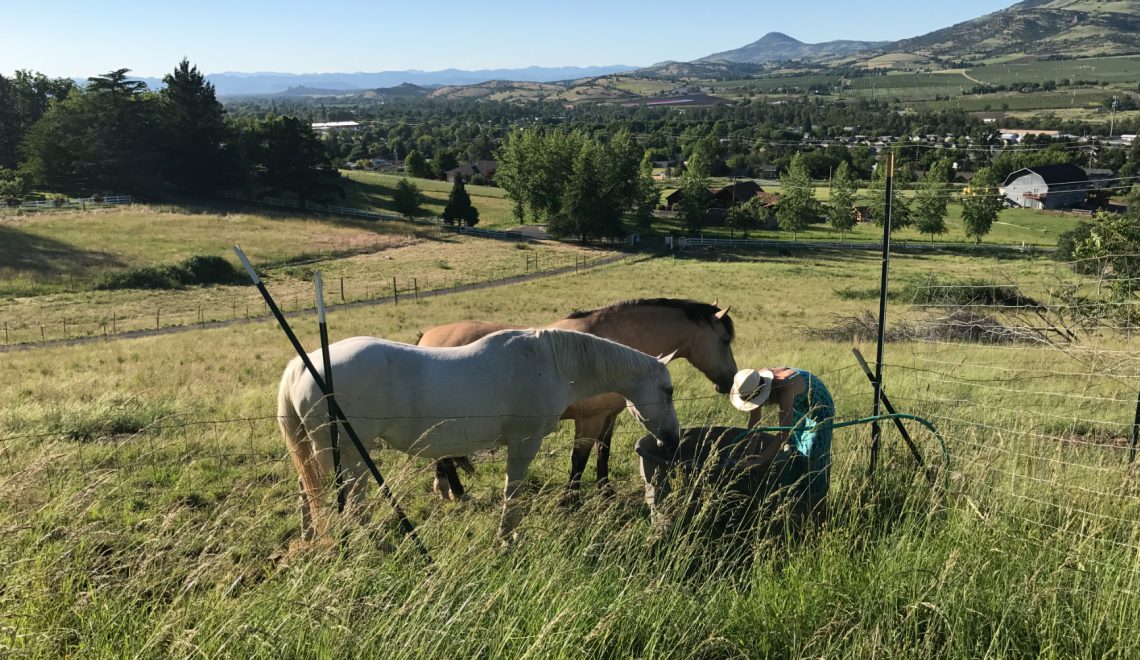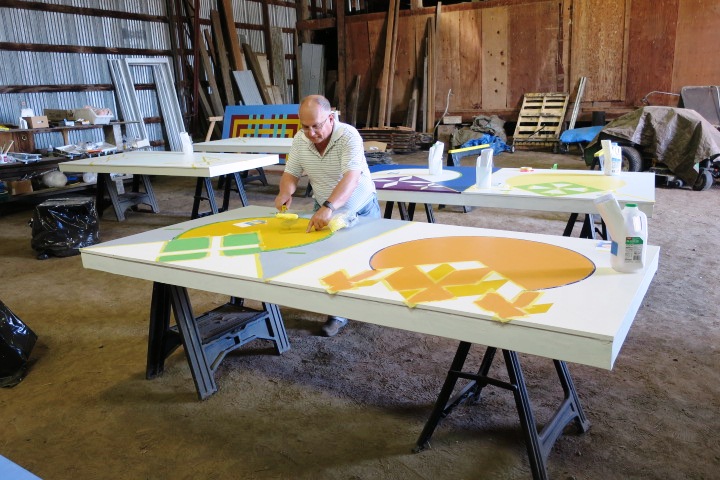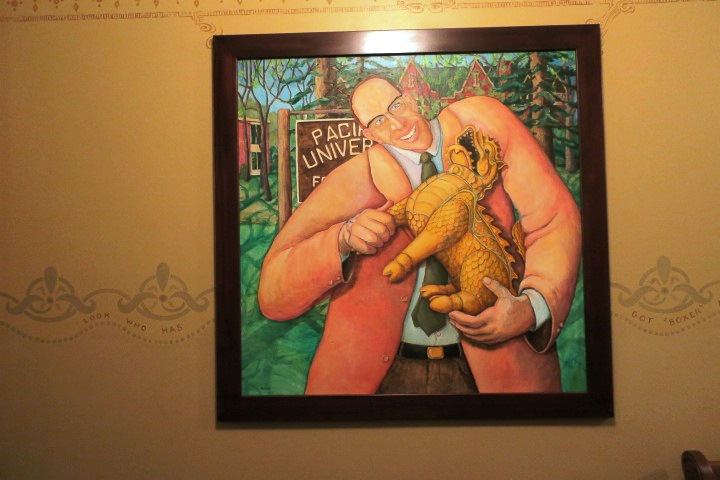On September 28, 1937, President Franklin Roosevelt dedicated Timberline Lodge (known as “The People’s Lodge”) which sits at the southern flank of Mt. Hood. His message, which was broadcast over radio, proclaimed that Timberline was a “monument to the skill and faithful performance of workers.”
The Great Depression had devastated the nation. Work programs were created, such as the CCC and WPA, to put people back to work. Over 500 men and women worked fifteen months to complete the Lodge, using only hand tools and accessible materials. The exterior structure is indeed impressive; however, the interior is brilliant at every turn.
The People:
Over 200 people at a time worked on site and lived in tents at Summit Meadow. They were paid $500/month. Each morning they were trucked up the mountain to work. The WPA hired all skills and ages. In fact, many of the workers were over the age of 55…all were desperate for work. The government approved the project in 1935. By June, 1936, the plans were ready and they broke ground. Fortunately, winter came late that year and the West Wing was completed before the snow fall. The only time the Lodge has closed since its dedication was during WWII.
Three themes were chosen for the interior design: (1) Indian (2) Pioneer and (3) Nature. Majorie Hoffman Smith was in charge of the interior design. She wielded a strong sense of how these three themes would mingle. Her word was law. No one questioned her.
There were no power saws or steel beams. Everything from metal to wood to weaving was done by hand.
The furniture was designed and created for the Lodge by calculating the size and space where it would be placed.
Textiles:
Mrs. Smith developed 23 motifs for the hand woven fabrics. Most of the weaving was done in Portland. 900 yards of fabric was produced, 119 hand woven rugs. The rugs were made from the wool of old WW I uniforms which had to be cut into strips and dyed to match the color scheme. Even today, when curtains or rugs must be replaced, they are still hand woven. All replacements adhere as close to the originals as possible.
Art:
Art, in all forms, can be seen throughout the Lodge.
In the Barlow Meeting Room, which was originally the dining room, is the work of Douglas Lynch. The only material available to Lynch was linoleum. His mural depicted the year round activities in the area, from skiing, to dancing, to camping. He used sharp knives to carve his scenes into the linoleum, then applied paint and finally a sealer.
On the mezzanine floor, which was originally to be an art gallery, hangs paintings of artists unknown at the time, now famous. Such as, CS Price. Two of his paintings from 1937, hang on the walls.
Carvings appear throughout the Lodge. This carving of a mountain lion was originally hung in the dining room. Marjorie Smith had it removed because she said that she did not want to look at something that could eat her while she ate. The mountain lion carving was immediately relocated to the main floor entrance.
Several mosaics adorn the Lodge. A visit to the Lodge is incomplete without stopping by the Blue Ox Bar. Originally, this room was a wood storage room. Marjorie Smith realized that the Lodge didn’t have a bar, so she turned the storage room into a bar. Here are three photos (1) creating the mosaic, (2) the completed mosaic and (3) the mosaic that was made from the pieces left over from making the Blue Ox mosaic. Nothing wasted.
Fixtures
There are 7 fireplaces (14 andirons) in the Lodge made from railroad ties. The screens are made from tire chains.
These lights are made from Oxen Yokes.
The hand carved newels on the stairways depict indigenous animals of the area. They were made from used cedar utility poles.
Above the archways are carved Indian symbols.
The 92′ volcanic stone fireplace is the centerpiece of the building. The stones were brought from the nearby canyons, shaped and lifted into place with the aid of a block and tackle.
Glance upward along one side of the fireplace to see a carving of four “hands” all moving the same direction in a circle.
A bit of trivia. The Lodge was almost finished, when Washington DC sent the requirement that the building had to be fitted with a sprinkler system. Instead of running the pipes on the outside, they managed to cover the pipes with the beams. The sprinklers are still there and in working order.
Contact Info:
Reservations: 1-800-47-1406
Email: info@timberlinelodge.com
Website: TimberlineLodge.com
If you have an opportunity to visit Timberline Lodge, take the one-hour, free Park Service tour presented by one of the volunteers. Bruce Bridgess was our guide. He explained in detail the effort people made to overcome hardship through creativity, camaraderie, and hard work during tough economic times. He beguiled us with interesting stories making the Lodge even more special. The tours are given 3X’s daily. Tour times are posted on the Daily Announcement Board.
About the Author:
In 2010, Annie Coburn created FAB Senior Travel, a blog for mature and adventurous travelers. Her blog features travel articles from contributors as well as her own travels. Annie has published five travel books targeting the greatest cities on earth: Walk Paris, Walk Beijing, Walk London, Walk NYC, and Ellie’s Grand Adventure. She recently spent seven-months living and traveling in South America.
You are invited to subscribe:
Website: http:// www.fabseniortravel.com




















